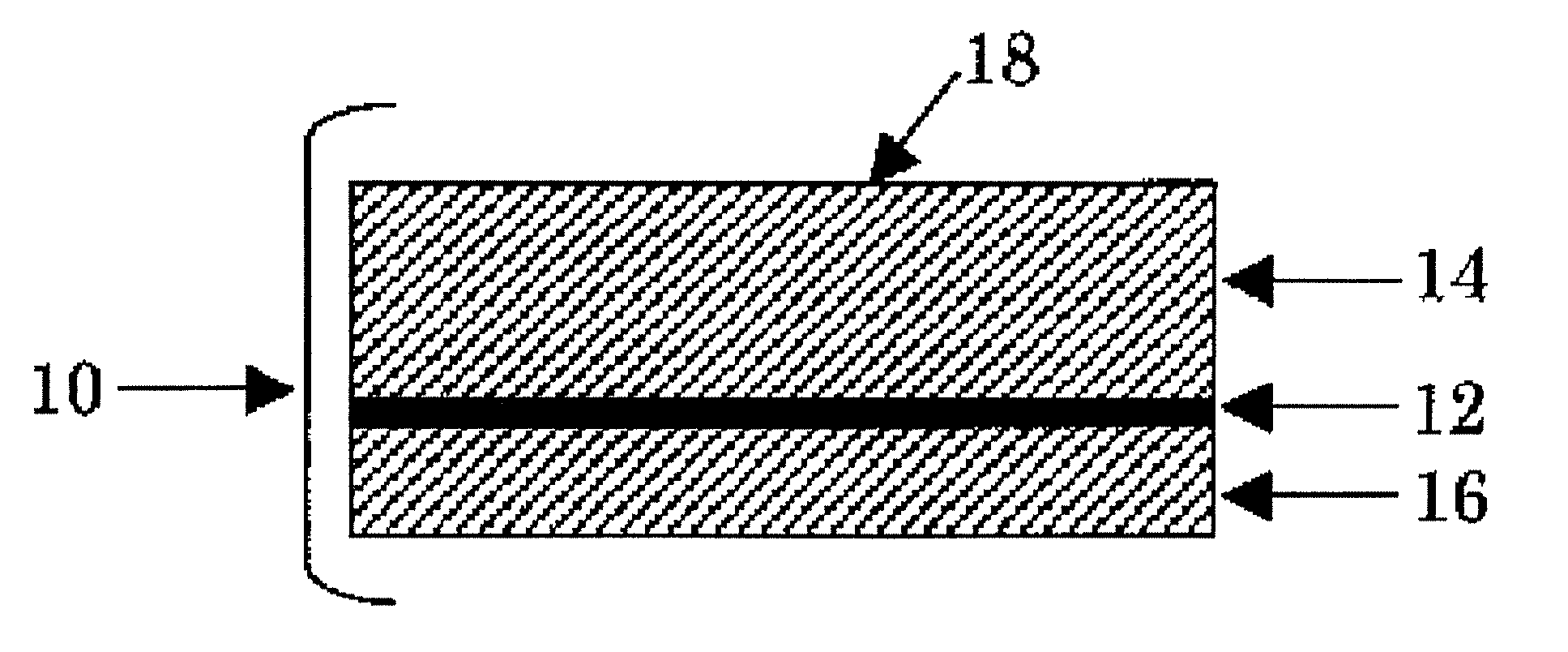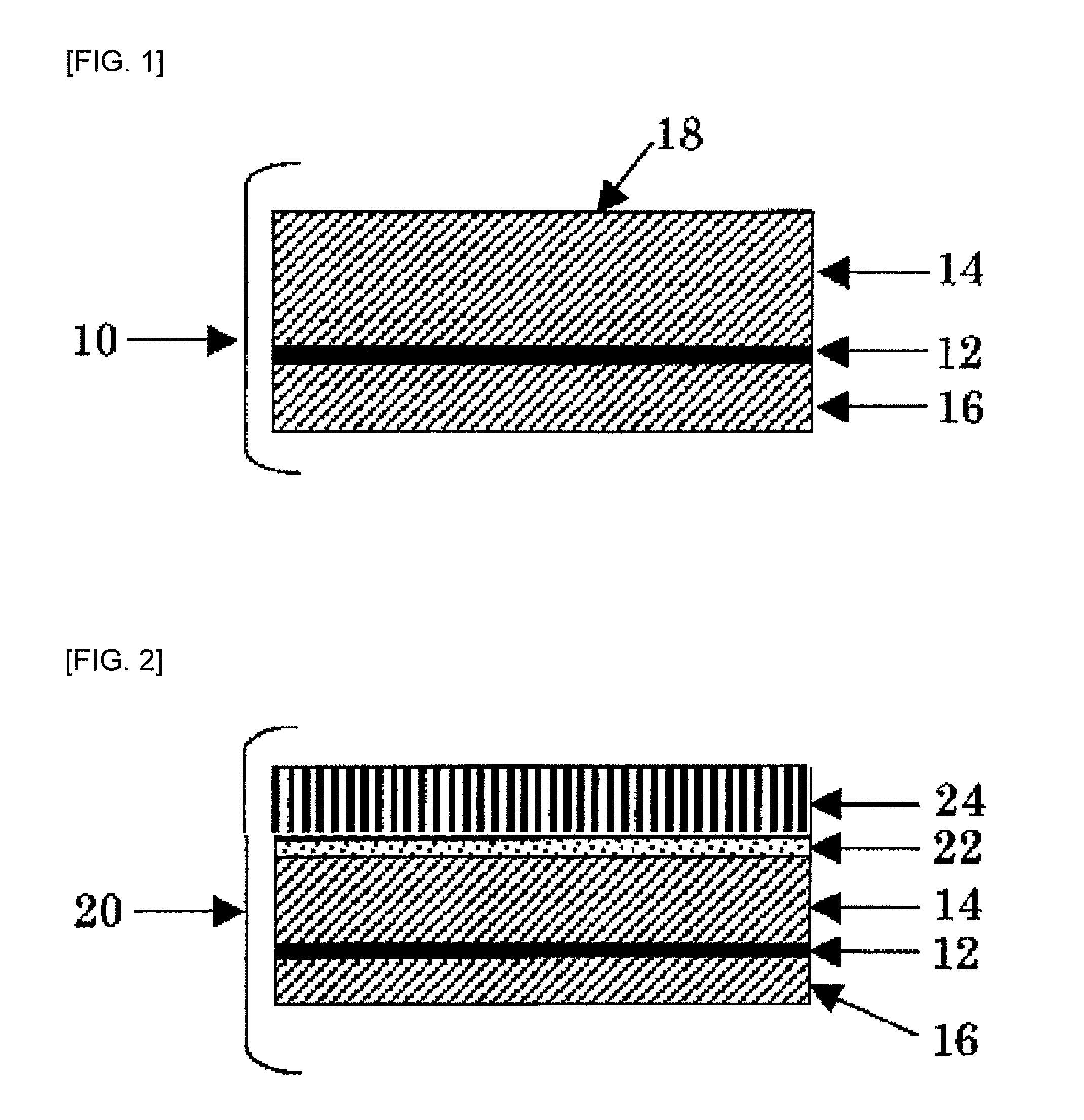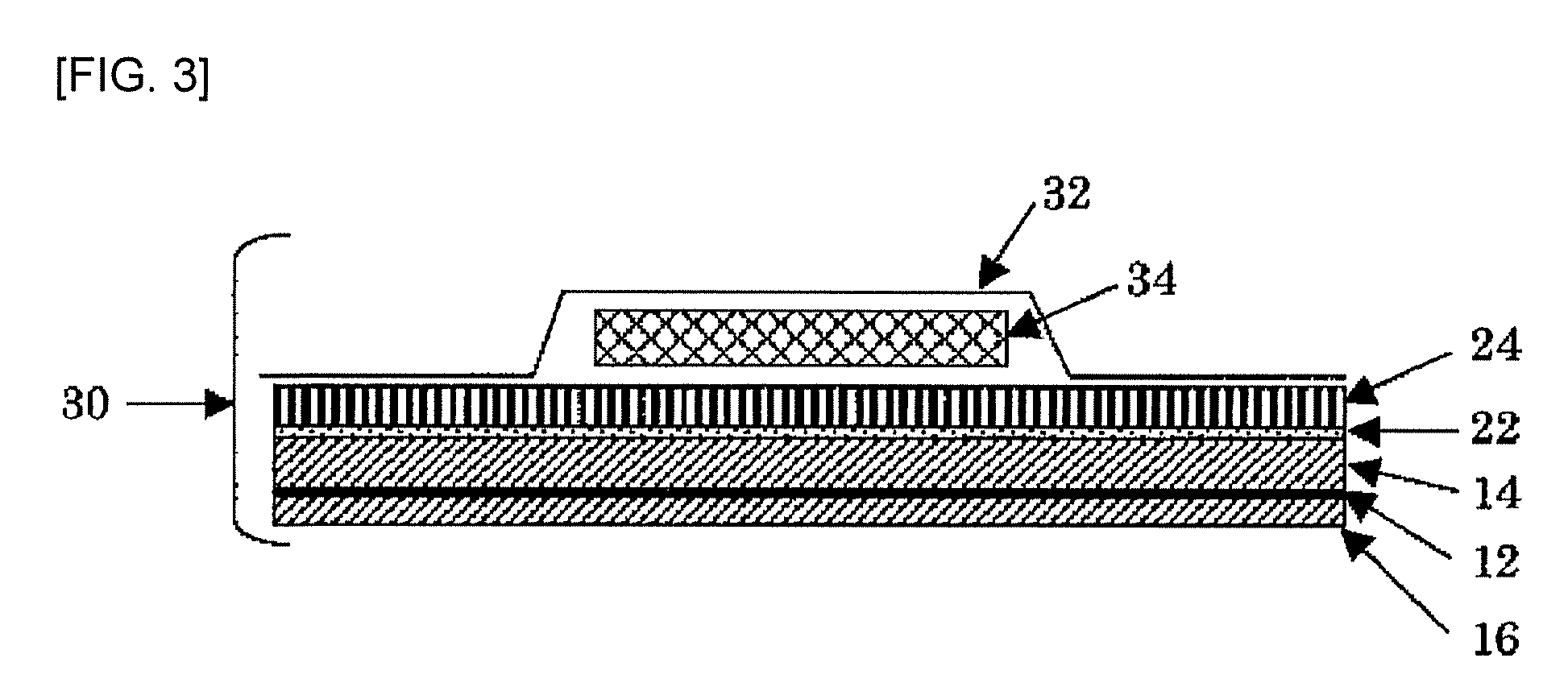Nonwoven fabric laminate, moisture-permeable nonwoven fabric laminated sheet using nonwoven fabric laminate, and sanitary products using them
a technology of nonwoven fabric and nonwoven fabric, which is applied in the direction of synthetic resin layered products, transportation and packaging, and bandages, etc., can solve the problems of insufficient sanitary products, and achieve the effect of reducing the quantity of hot melt adhesive that reaches the melt blown nonwoven fabric, reducing the base weight of the nonwoven fabric laminate, and reducing the bleed-through of hot melt adhesiv
- Summary
- Abstract
- Description
- Claims
- Application Information
AI Technical Summary
Benefits of technology
Problems solved by technology
Method used
Image
Examples
example 1
[0096]As a spunbonded nonwoven fabric raw material, polypropylene (propylene homopolymer, MFR (measured at a temperature of 230° C. under a load of 2.16 kg in accordance with JIS K7210-1999): 65 g / 10 min) was used. Under the conditions of a molten resin temperature of 220° C., a single hole discharge rate of 0.40 g / min, a cooling air flow velocity of 1.4 m / s and a cooling air flow temperature of 25° C., two layers of spunbonded nonwoven fabrics having a fiber diameter of 1.2 d were laminated upon each other to obtain a first SB nonwoven fabric 14 having basis weight of 10.8 g / m2.
[0097]As a melt blown nonwoven fabric raw material, polypropylene (propylene homopolymer, MFR (measured at a temperature of 230° C. under a load of 2.16 kg in accordance with JIS K7210-1999): 900 g / 10 min) was used. The raw material was melt kneaded by an extruder at a molding temperature of 290° C., and the resulting melt kneadate was extruded into a high-speed hot air stream from a melt blowing die to obta...
example 2
[0103]A first SB nonwoven fabric 14 having a fiber diameter of 1.4 d and basis weight of 9.4 g / m2 and a second SB nonwoven fabric 16 having a fiber diameter of 1.4 d and basis weight of 4.7 g / m2 were each obtained by controlling the molding conditions in Example 1.
[0104]Then, a MB nonwoven fabric 12 having a fiber diameter of 2 μm and basis weight of 0.9 g / m2 was obtained.
[0105]By making other conditions the same as those in Example 1, a nonwoven fabric laminate 10 (thickness of first SB nonwoven fabric 14: 148 μm, thickness of second SB nonwoven fabric 16: 81 μm, basis weight ratio: 2.0, thickness ratio: 1.8, overall basis weight: 15 g / m2) and a moisture-permeable nonwoven fabric laminated sheet 20 were prepared. Then, properties of the nonwoven fabric laminate and the moisture-permeable nonwoven fabric laminated sheet were measured and evaluated in the same manner as in Example 1.
[0106]The results are set forth in Table 1.
examples 3 to 5
[0107]A first SB nonwoven fabric 14 having basis weight of 9.4 g / m2 (Example 3), 8.7 g / m2 (Example 4) or 10.6 g / m2 (Example 5) and a second SB nonwoven fabric 16 having basis weight of 4.7 g / m2 (Example 3), 5.4 g / m2 (Example 4) or 3.5 g / m2 (Example 5) were each obtained by controlling the molding conditions in Example 1.
[0108]Then, a MB nonwoven fabric 12 having a fiber diameter of 2 μm and basis weight of 0.9 g / m2 was obtained.
[0109]By making other conditions the same as those in Example 1, a nonwoven fabric laminate 10 (thickness of first SB nonwoven fabric 14: 143 μm (Example 3), 130 μm (Example 4), 153 μm (Example 5); thickness of second SB nonwoven fabric 16: 78 μm (Example 3), 92 μm (Example 4), 69 μm (Example 5); basis weight ratio: 2.0 (Example 3), 1.6 (Example 4), 3.0 (Example 5); thickness ratio: 1.8 (Example 3), 1.4 (Example 4), 2.2 (Example 5); overall basis weight: 15 g / m2) and a moisture-permeable nonwoven fabric laminated sheet 20 were prepared. Then, properties of th...
PUM
| Property | Measurement | Unit |
|---|---|---|
| diameter | aaaaa | aaaaa |
| melt flow rate | aaaaa | aaaaa |
| melt flow rate | aaaaa | aaaaa |
Abstract
Description
Claims
Application Information
 Login to View More
Login to View More - R&D
- Intellectual Property
- Life Sciences
- Materials
- Tech Scout
- Unparalleled Data Quality
- Higher Quality Content
- 60% Fewer Hallucinations
Browse by: Latest US Patents, China's latest patents, Technical Efficacy Thesaurus, Application Domain, Technology Topic, Popular Technical Reports.
© 2025 PatSnap. All rights reserved.Legal|Privacy policy|Modern Slavery Act Transparency Statement|Sitemap|About US| Contact US: help@patsnap.com



